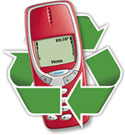
The Real Effects of Back-to-School Shopping in the 21st Century
The second-largest shopping season in the United States, back-to-school shopping for new clothing and school supplies has expanded to include electronic devices such as laptops, tablets, and mobile phones. Now, as much as 36 percent of back-to-school purchases are electronic devices.
This presents a challenge as new devices replace old ones. Electronic devices contain hazardous materials, which if sent to a landfill could contaminate drinking water sources, harm the environment, and impair the ability to reuse the precious metals resources contained in the devices. A recent infographic released by Sims Recycling Solutions explains the benefits of recycling electronic devices and seeks to increase awareness of the options available to consumers when looking to replace old devices.
Working Gadgets Are Being Replaced
Many people decide to discard an electronic device not because the device is broken or needing repair. More often than not, working gadgets are replaced because newer technologies. So it doesn't come as a surprise that electronic waste is now the fastest-growing waste stream in the United States. However, regardless of the reason for disposal, what really matters is what happens to the old equipment -- working or not -- when it is no longer desirable.
Today, only 25 percent of electronics are recycled in the United States, with 68 percent of consumers simply storing their old equipment. What often is not considered are the valuable resources contained within these devices that, rather than sitting in storage, can contribute toward a new product.
Turning Old Into New
If electronics are reused, it will extend the useful life of a device. However when that device is rendered useless, it should be brought to a responsible recycler to be made into a new product using these same materials. For example, cellphones consist of plastics, silver, gold, and copper. When received at an end-of-life recycling facility, these devices will be dismantled, separated, and prepared for a smelter to process further. Plastics within the device are used as fuel, and precious metals are extracted from the circuit boards. The final outputs can be used in the manufacturing of new products. EPA estimates that recycling one million mobile phones reclaims 35,274 pounds of copper, 772 pounds of silver, 75 pounds of gold, and 33 pounds of palladium.
Most of the commodities can be reused infinitely, making this a sustainable process as long as the items make it to these responsible recyclers. For more information, contact your service provider or device manufacturer. When electronics are sent to certified electronics recyclers, special care is taken to ensure all data is destroyed.
Steve Skurnac is the president of Sims Recycling Solutions, a global provider of electronics reuse and recycling services.
Posted by Steve Skurnac on Aug 16, 2013